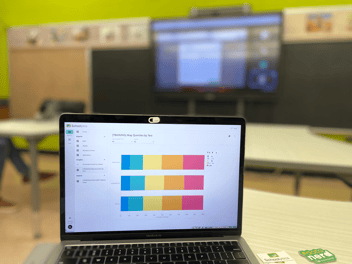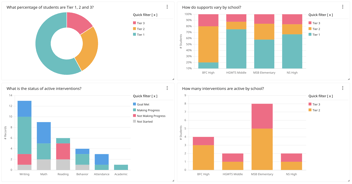
Grading inconsistencies pose significant challenges in K-12 education, especially when grades vary widely among teachers or fail to align with assessment results. This not only complicates academic advancement but also affects equity, as noted in a recent white paper by Crescendo Education Group. Grades often reflect subjective factors rather than objective performance, causing discrepancies that disproportionately impact underserved students. While some districts have adopted standards-based grading as a solution, the transition to mastery measurement for students, parents, and even college admissions officers can prove to be too big of a barrier.
Schoolytics addresses these issues head-on, providing a data-centric approach to grading and academic evaluation that can level the playing field. Schoolytics gives districts the ability to do in-depth grading analysis and cross-checks with various assessments, leading to a clearer picture of student progress. Below, we outline three ways in which connecting data yields valuable information around how much students' grades are aligned with content mastery.
Correlating Grades with Comprehensive Assessments
Schoolytics offers a unique ability to correlate classroom grades with standardized assessments, including state formative assessments, SATs, AP scores, and more. By comparing grades against a wide range of external benchmarks, districts gain insights into the alignment (or misalignment) between daily classroom assessments and broader evaluations of student performance. This feature helps highlight areas where grades may diverge from test scores, allowing educators to adapt instructional strategies to better support students who may perform well in class but struggle with standardized tests—or vice versa.

In practical terms, districts can investigate students who are getting As but not meeting standard when assessed. The big question is: why is a student excelling in classroom assignments and coursework but underperforming on standardized tests? Perhaps the student may need targeted support to bridge this gap. And, if grades are consistently higher than standardized test scores, the district can evaluate its grading practices to better reflect core learning objectives. Another example is when a student is getting poor grades, but showing mastery knowledge in the assessment. It is important to understand what is going on with that student, who may be underperforming in class but has signs of clear potential.
Schoolytics empowers educators to identify these trends, so they can make data-driven adjustments, promoting both academic honesty and success.
Spotting and Addressing Variations Across Teachers
One powerful feature of Schoolytics is its ability to show grade patterns across classrooms, revealing variations that might otherwise go unnoticed. For example, teachers may weigh participation, assignments, and test scores differently, leading to wide disparities in final grades. By analyzing these variations, administrators can identify where grading practices diverge and promote a more standardized approach, ensuring that students are evaluated consistently. With Schoolytics, schools can quickly pinpoint which practices contribute to higher or lower grades and work toward greater alignment. This not only benefits students academically but also ensures that grades are a fair reflection of their skills and efforts.

Through this teacher-grade comparison, Schoolytics enables districts to create professional development opportunities tailored to aligning grading practices across the board. This collaborative approach to grading adjustments fosters a culture of fairness and helps educators better assess students' true mastery of skills and concepts.
Promoting Data-Driven Academic Equity
Finally, Schoolytics fosters a fairer academic environment by helping schools identify patterns and disparities across all student demographics. With customizable reports and filters, schools can track grade distribution by gender, race, socio-economic background, and English language proficiency, to ensure that all student groups are evaluated equitably. This data allows administrators to take proactive steps to correct disparities, providing additional support to students who need it most and ensuring equitable access to academic recognition and advancement opportunities.

Schoolytics Can Help
The good news is that there are policy changes that states and districts can adopt that support better grading, including training teachers on grading practices and increasing transparency around grades-assessment alignment.
Schoolytics can be a critical tool for districts striving to enhance transparency and ensure that grades align with genuine student achievement. By facilitating deeper analysis of teacher grading patterns and providing powerful comparative insights with assessments, Schoolytics allows educators to move beyond grades as mere numbers, transforming them into reliable indicators of student success. Through informed, data-driven interventions, schools can cultivate an environment where every student’s performance is recognized and supported equitably.
Related Articles


How a Data Vacuum Prolonged the Literacy Crisis
The “reading wars”---defined loosely as the conflict between whole-language instruction and the...

Enhancing MTSS with Student Data: A Comprehensive Approach
A well-implemented Multi-Tiered System of Supports (MTSS) framework is a key tool for schools and...

